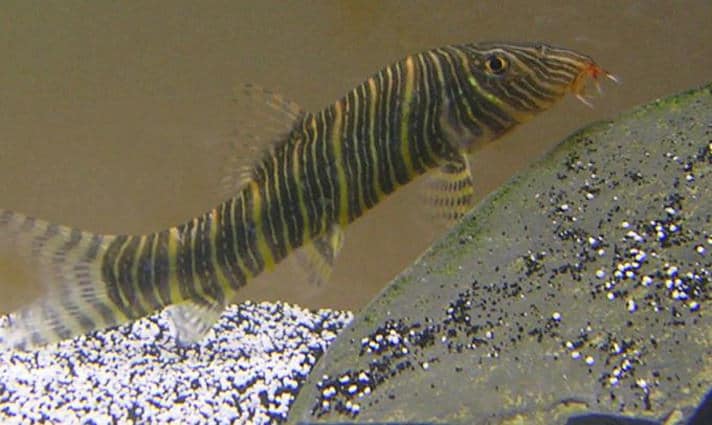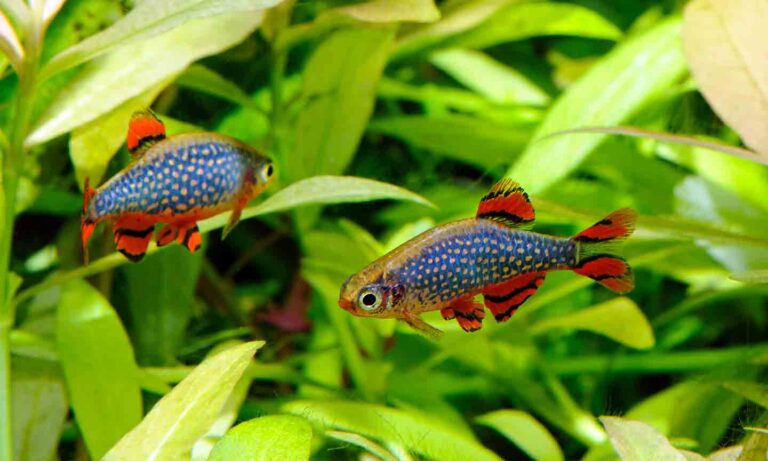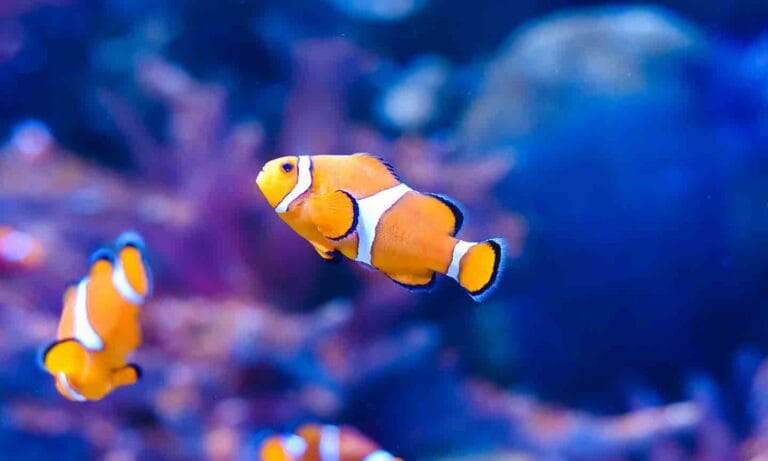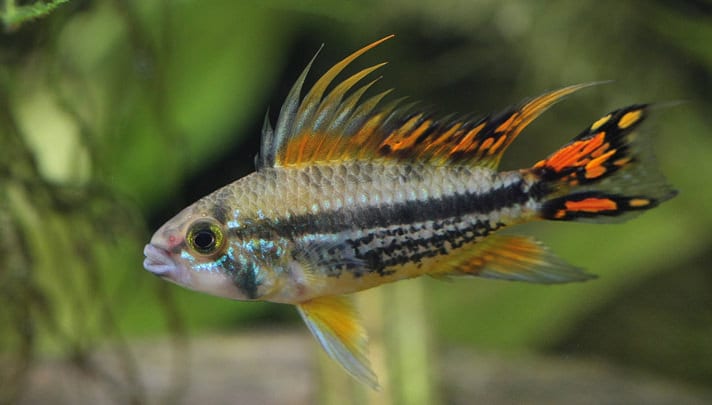Q.
I lost a pair of discus fish within three weeks of moving into my new apartment. The water on tap where I live is harder than discus fish can tolerate (10 dKH), and the commercial softening treatment I tried was to no avail. I would still like to keep discus fish. Is there anything I can do to reduce the hardness of my tap water?
I have also noticed that water hardness tends to spontaneously increase over time. What are the factors involved in this process? Does the accumulation of nitrates have any effect on water hardness and does pH have any effect on water hardness?
A.
The first step in addressing your problem is to clarify a number of misunderstandings about water chemistry that are widely shared by aquarists. There is a strong tendency among amateur fishkeepers to regard the concepts of hardness and total dissolved solids as effectively synonymous. They are not, and failure to appreciate this fact can have unfortunate consequences.
Hardness is a measure of water’s capacity to precipitate soap from solution. For all practical intents and purposes, hardness measures the concentration of two positively charged ions, or cations, calcium (Ca++) and magnesium (Mg++), present in solution. Water chemists and aquarists alike distinguish between carbonate or temporary hardness, a measure of the dissolved carbonate and bicarbonate salts of calcium and magnesium, which can be eliminated by boiling, and permanent hardness, so called because it measures the soap precipitating capacity of water after boiling.
Which is to say, permanent hardness is a measure of dissolved magnesium sulphate. The pH of water does not have any direct effect upon its hardness, although the reverse is true. Because carbonate ion is an important buffer, water hardness is usually a good predictor of pH — typically hard water is usually quite alkaline.
Total dissolved solids (TDS) is, as its name implies, a measure of all the substances dissolved in a given body of water. Hardness obviously contributes to TDS, but as natural waters can also contain such dissolved substances as sodium chloride (NaCl) and nitrate ion, which do not contribute to their hardness, it must be regarded as simply one component of the broader measure.
The confusion tends to arise in aquarists’ minds because in many natural waters, calcium carbonate and magnesium sulphate are the most abundant dissolved chemical salts. Because hardness is also very easily measured, there is a tendency to use hardness as a sort of shorthand term for TDS. The concentration of TDS in an aquarium tends to increase over time when evaporative water losses are replaced using mineralized tap water.
Any calcareous material present in a fish aquarium also tends to go into solution over time, which also increases the total quantity of dissolved substances in solution. So, obviously, does the buildup of nitrates due to the operation of a biological filter.
Aquarists like yourself, who attempt to deal with hard tap water by passing it through a commercial water softening unit, discover very quickly that hardness and TDS are most emphatically not the same thing! Commercial water softening units, sometimes known as sodium exchange units, work by passing hard water through a chemically active clay, known as zeolite, that pulls calcium carbonate and magnesium sulphate out of solution and replaces them with sodium chloride. Water so treated no longer precipitates soap from solution, which makes it much easier to do the laundry and lather up in the shower. However, it still contains a significant amount of dissolved material.
The “soft” water inhabited by such species as discus fish and cardinal tetras is not merely devoid of calcium carbonate and magnesium sulphate. It essentially lacks significant concentrations of any dissolved salts and should properly be referred to as demineralized. This is why water that has been treated by a sodium exchange unit, while perfectly soft, remains totally unsuitable for “soft” water fishes. From their perspective, commercially softened water still retains an unacceptably high concentration of dissolved minerals. Demineralization is the only way to make your tap water discus-friendly.
There are synthetic zeolites that replace all positively charged cations with the hydrogen ion (H+) and all negatively charged ions, or anions, with the hydroxyl ion (OH–). Because they must be regenerated using strong acids and bases, there is an element of hazard entailed in their upkeep that renders them unattractive to most domestic users. Happily, there is another approach to demineralizing tap water with none of the disadvantages of strong acid/base exchange resins that meets the needs of amateur aquarists.
Demineralization by reverse osmosis (RO) entails pushing water through a membrane that selectively holds back all dissolved minerals. Indeed, the output of an efficiently functioning RO unit is so completely devoid of dissolved substances that fish placed in it cannot maintain a physiologically appropriate internal salt balance and soon die! For aquaristic purposes, it is thus necessary to mix RO output with a small amount of untreated tap water in order to provide the trace concentration of dissolved substances necessary to support aquatic life. These units are readily available in a wide range of sizes, their price essentially a function of their rated output. Smaller units do not take up a great deal of space, and their installation is usually a relatively straightforward matter.
RO units are not without their shortcomings. First of all, RO membranes have been manufactured to serve a wide variety of purposes. A membrane designed for the desalination of seawater is unlikely to do a good job of demineralizing freshwater. Membrane efficiency is also affected by specific dissolved substances. Knowing the chemical makeup of one’s domestic water supply is thus essential in order to select an appropriate RO unit.
Secondly, their membranes tend to become more permeable to both cations and anions over the passage of time. A membrane will eventually totally lose its ability to retain dissolved minerals and have to be replaced. Its longevity is effectively a function of the mineral content of the water it is expected to treat. The higher the TDS of the incoming water, the shorter its effective life.
However, the main shortcoming of RO units is that they are extremely water consumptive. On the average, 7 gallons of tap water pass through a unit for every gallon of demineralized water produced. This is less likely to be a problem in New Jersey, where water is plentiful and relatively inexpensive, than in Arizona, where the reverse is the case. The trade-offs involved in the operation of an RO unit should be considered carefully before deciding to purchase one.
This operational constraint also means that RO units operate quite slowly. It is thus necessary to have a means of storing the unit’s output until it is needed for water changes. These shortcomings notwithstanding, an RO unit still represents the best available means of demineralizing hard tap water available to the aquarium hobbyist. If you are serious about keeping discus fish, investing in an RO unit of the appropriate size will go a long way toward assuring a successful outcome to your discus-keeping venture.
Posted by: Chewy Editorial
Featured Image: Via Daniel McDermott/Flickr
Share:










